QUIVER REST
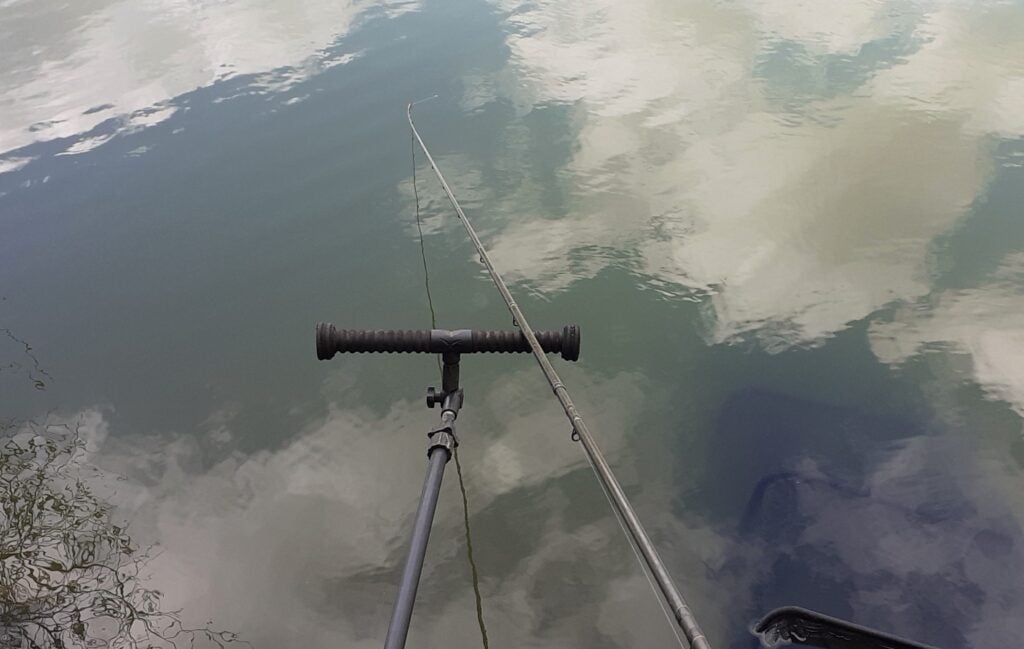

I liked the concept of a soft EVA foam rod rest, because with shallow multi-position quivertip designs, line often gets trapped between the rod and the hard plastic most are made from. This issue can be a pain when trying to tighten up after the feeder has settled. Quick indications can be missed if the line snags as you are trying take up any slack. On seeing the soft foam Matrix Feeder Rest in a local tackle shop, I purchased one. However, the first time I used it I was constantly distracted by its bright yellow ears. When I’m studying the strip of fluorescent orange paint on the end of my quivertip, I don’t want anything else pulling my attention away. I unscrewed the offending plastic bits and the session went fine after that. When I got home, I modified the rest by gluing EVA discs on its ends, to prevent the rod from being pulled off, also installing an old angle lock to lift it well away from the feeder arm. I like it much better now.
FLUOROCARBON
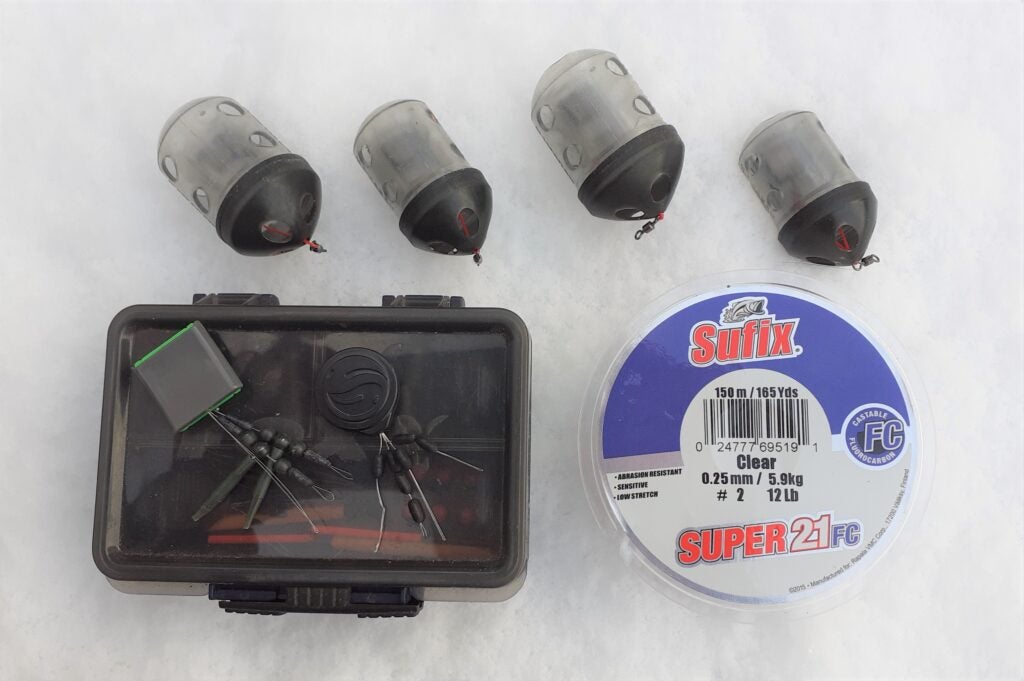

There’s no doubt that short 4-6 inch hook lengths work wonders with pellet, method and hybrid feeders, along with helicopter blockend rigs. But what doesn’t work very well is using low diameter rig mono for this job. It tends to tangle too easily and isn’t robust enough. I got fed up with having to change tangled and battered hook lengths, so I turned to fluorocarbon. This line is much stiffer and far more resistant to wear and tear. I soon discovered short hook lengths formed with this material lasted all session, with hardly any tangles. If they did occur, they could be sorted quickly with no apparent signs of damage. Better still, 4 or 6 inch hook lengths could be left free of the feeder without tangling back around it, due to their stiff nature. This sped everything up, instead of having to bury everything with in-line feeder designs, which wastes time when the fish are queuing up. Another bonus is fluorocarbon is virtually invisible in water.
PELLET PUMP
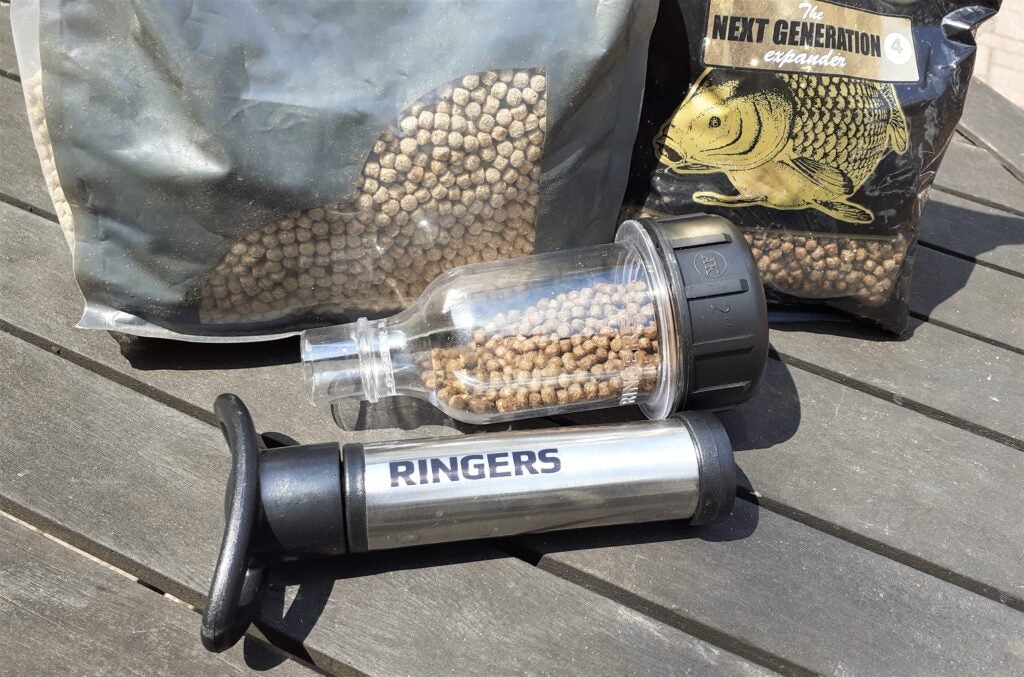

To be fair, my last plastic pellet pump lasted a long time, but when the rubber seal began to lose its effectiveness, I couldn’t find anything like it. Later versions looked bulky and less robust, while some seemed over-fussy to operate. In the end I settled for Ringer’s design, made from much sturdier aluminium, and advertised as being a lot quicker to use, in the quest for turning floating expanders into sinkers. It was too, one pump and the bait was ready to use or to store in a plastic bag. A bit pricy at nearly twenty quid, but then again some of the all-plastic versions were that much too. I don’t mind paying for quality. I need something like this anyway, since a mate showed me how to use the run-off water from feed pellets to flavour and colour expanders, so they match up perfectly. I also want to experiment with gelatine to make more robust hooker pellets, rather than using off-the-shelf products, that might not match what I’m feeding.
DACRON CONNECTORS
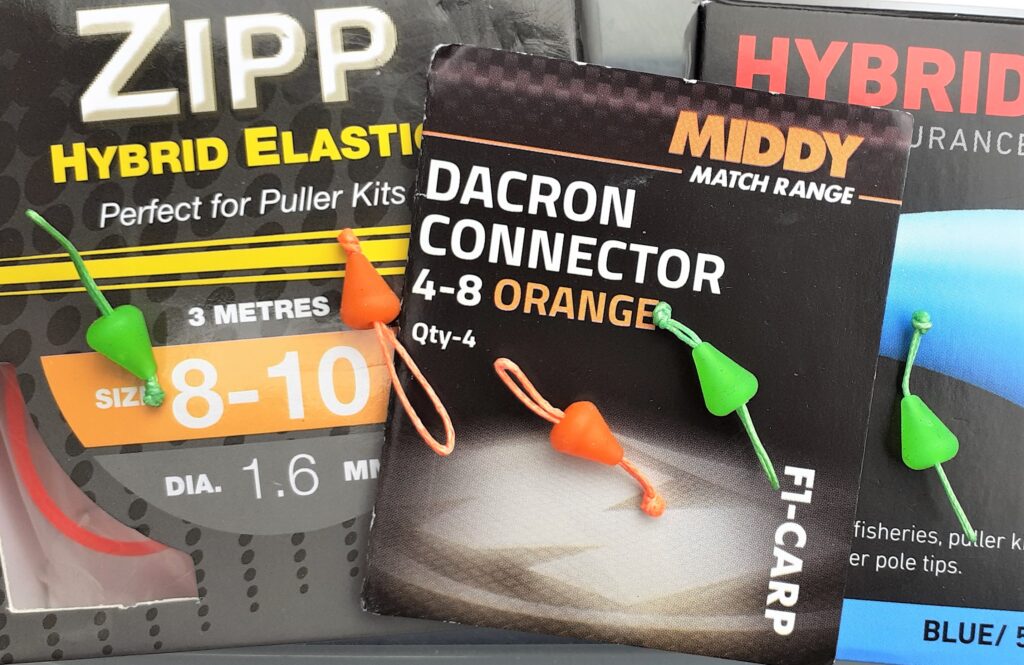

These new-style pole elastic connectors are all the rage at the moment. I used something similar I made myself 25 years ago, but got fed up with trying to get rigs off them at the end of sessions. I know there are fancy double loop knots you can use, to help disengage rigs when they are finished with, but it’s still fiddly. I’ve gone back to plastic connectors, bearing in mind I tend to use smaller sizes than are generally recommended for the elastic diameters being employed. This is possible using clever knots and with a little patience. I find those connectors more convenient and they don’t bump lots of fish off, like some say they do. They are certainly neater than Dacron versions, which flap about in the wind and look awkward to me. (I think some versions are too long as well). Don’t get me wrong, the new connectors are nice products, but with fishing I think tackle comes down to personal preference, whatever the manufacturers say.
WORM SLOP
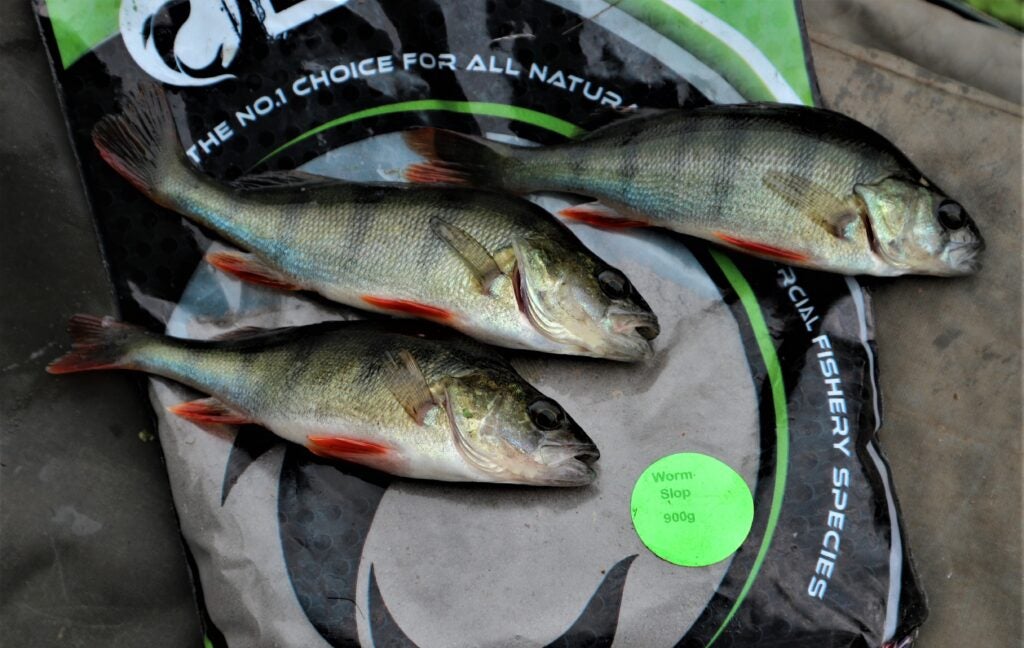

Doing some consultancy work for Essex company Burt Baits, they sent me a lot of different samples to try. Greyish black Worm Slop groundbait caught my eye because I use a lot of chop during the winter. Practicing for a couple of canal matches, it was noticeable that by introducing freshly chopped worms and a few casters in this gear, the fish kept coming back. Normally with chop you get two or three goes at feeding it and that’s your lot. But on these practice sessions the bites just kept on coming. The murky cloud and worm meal attractors stirred lots of activity every time I fed the soft mix, whether using a pole cup or throwing small balls in by hand. It wasn’t just perch that turned up, quality roach and skimmers moved in too. I used the same tactics when pole fishing a couple of drains and it was a repeat performance. I also tried adding this stuff to other dark groundbaits I use in winter and it seems to give an edge.
RIG LINE


I had a hand in developing Advanta X5 Rig Line for Angling Direct when I did some work for them a while back. I discovered this clear Japanese low diameter line several years previously, and had been using it extensively. It gave refreshingly honest diameters and breaking strains, compared to some brands I tried. I really don’t see the point of using the “strongest” 0.12mm line on the market if it’s really 0.14mm or thicker! And the same applies right the way through some ranges. Boasts of being “Super Strong” are no help if you can’t get bites, because you are using a product that’s much thicker than stated. I always use a micrometer on all my lines, because if they don’t lie, at least I know where I stand in the quest to catch fish. I’m sure we have all experienced what a difference it can make dropping down a gauge with hook length material, which often magically brings swims to life. The smaller X5 spool sizes store away more easily as well.
POT SYSTEM
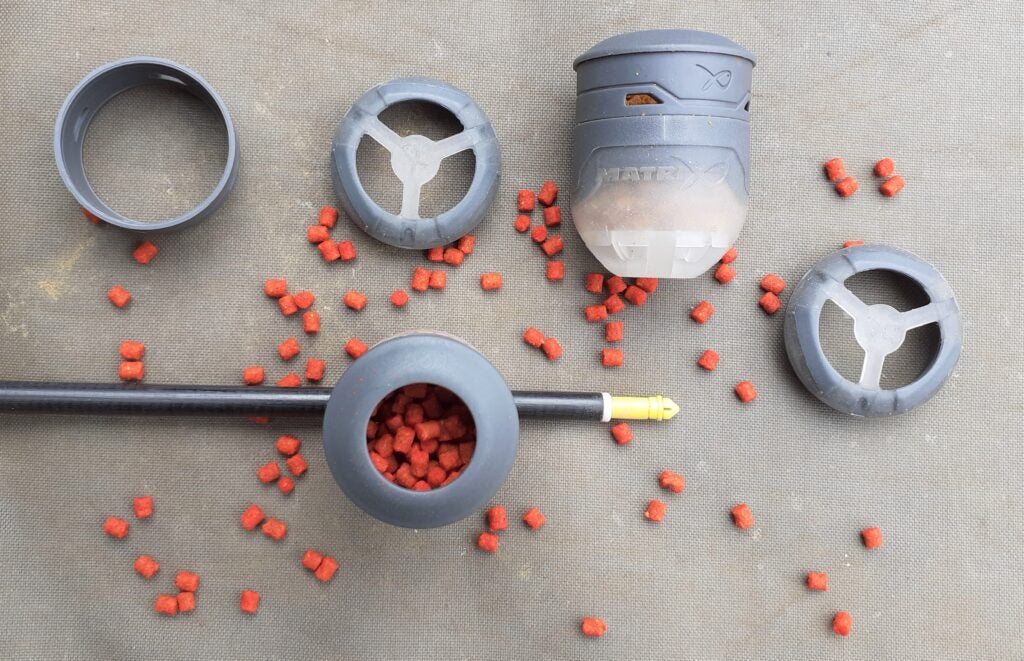

Flexible Toss Pots are what Matrix call this clever system, which provides two compact pole cups, two lid options and a pair of extender sections. The flexible TPR material they are made from is brilliant, because they can be securely anchored right at the end of your pole, where they need to be to drop small amounts of feed over your float. The lids have different non-spill openings, one with a basic rim, one with retaining bars, to suit the size and type of bait being fed. The extensions simply clip in place and allow bigger helpings to be shipped out, or they can be used to avoid spilling any contents in tricky conditions. These are the best Cad-style pots I’ve had the pleasure to use. They even have small perforations in their bases, to help stop wet baits like pellets from sticking when trying to tip them out. This type of feed pot makes a big difference on heavily fished commercials, where feeding needs to be kept mean and tight for success.
NEW HOOKERS
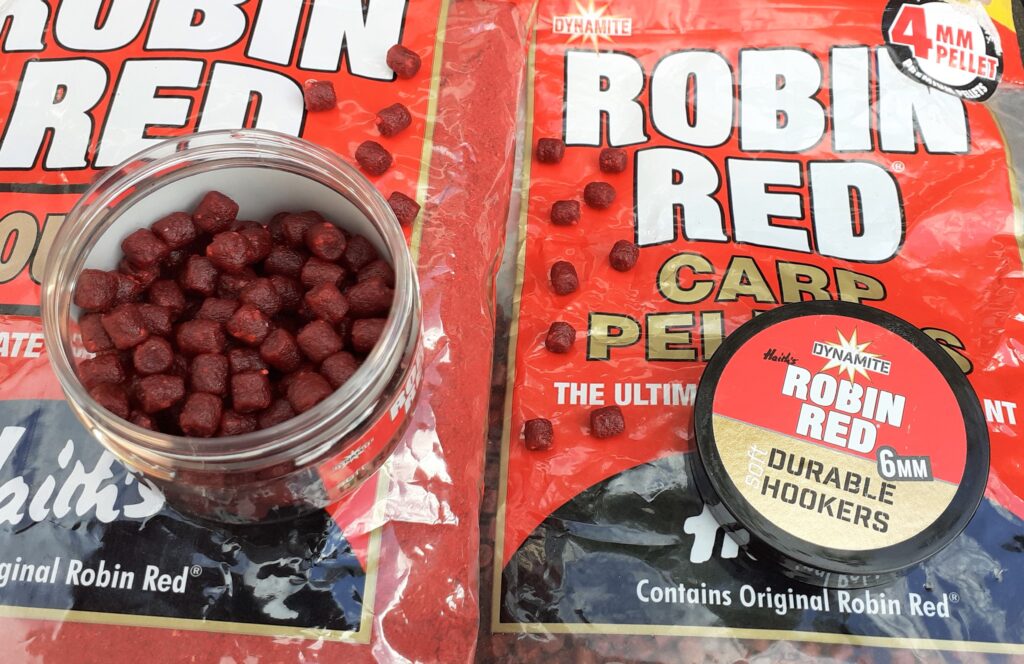

I’ve been a fan of Dynamite’s Robin Red feed pellets and groundbait for several years, so I was delighted when they introduced matching flavour Durable Hook Pellets recently. That completes the set in my opinion. Although primarily designed for carp, I’ve done well using this spicy flavour and deep red colour when targeting tench, also discovering bream like it on several local venues. The 4mm and 6mm feed pellets are great for getting through nuisance small fish when they are blitzing baits like maggots, casters and worms. The way I like to bring Robin Red pellets into play is feeding the 4mm size by catapult when I’m using waggler tackle, alternating by feeding casters over the same line, starting with double red maggots. The latter hook bait normally produces bites first. After that I try caster or a segment of worm on the hook, looking for skimmers, roach, or perch. Now I have a matching soft hook pellet option for bigger fish too.
READY TIED
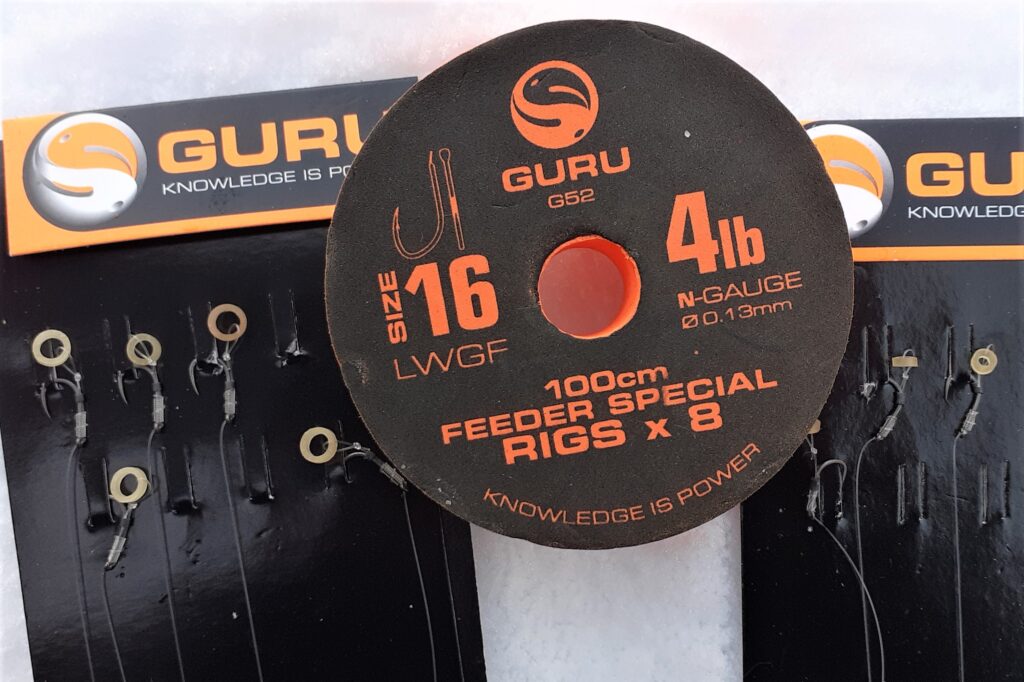

I never imagined I would ever trust ready-tied hooks. After working in tackle shops for many years, I was unimpressed by many of these products. Some were poorly made, others had line that was badly creased and quite a few were virtually impossible to unravel. On top of that, I couldn’t find hook patterns and breaking strains I wanted. But all that changed when Guru raised this category up several notches. Not only did they produce hooks to nylon that were perfectly tied, but also presented them in neat packaging, even mounted on soft EVA spools, which didn’t damage the rigs. With items like their short 4 inch hook lengths, which feature small latex bait bands ready installed in looped hairs, I couldn’t tie them this good! The longer traces are well put together too, smartly stored and pinned on soft spools. There’s little point in doing such a time-consuming job yourself when the finished products are retailing for just £3.49 a pack.
GOING GREEN
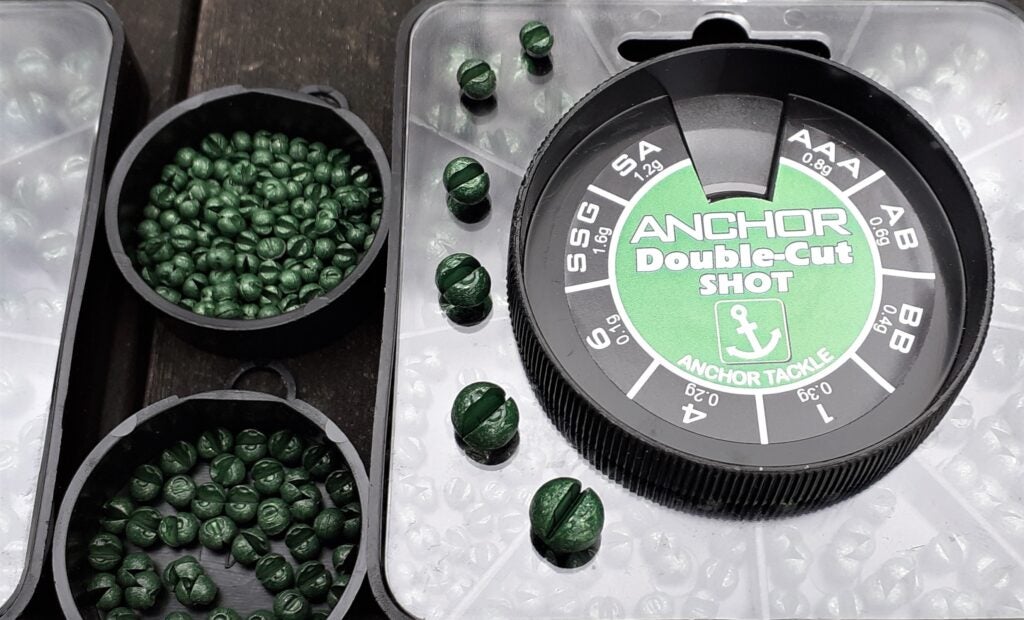

I’ve preferred the green version of Anchor Double Cut Shot since it was first introduced. Apart from looking less conspicuous, the coating helps the weights grip line better, especially larger sizes, which I use to lock wagglers in place. I find with these coloured ones, I can use them many times and they still grip okay, while unpainted versions tend to become loose a lot quicker. Even with bulked shot well away from the hook, or either side of a bottom-end float, I don’t think bright surfaces do any favours. They don’t look nice either. I see many anglers have switched to loaded floats, combined with line stops to lock them in place. I’m not keen because loaded floats dive deeper and take longer to settle. Using a couple of locking shot either side of wagglers acts like a brake as they hit the water, so your rig begins working faster. Going through several line stops every session works out far more expensive than re-using the same shot multiple times.
WINDOW SHOPPING
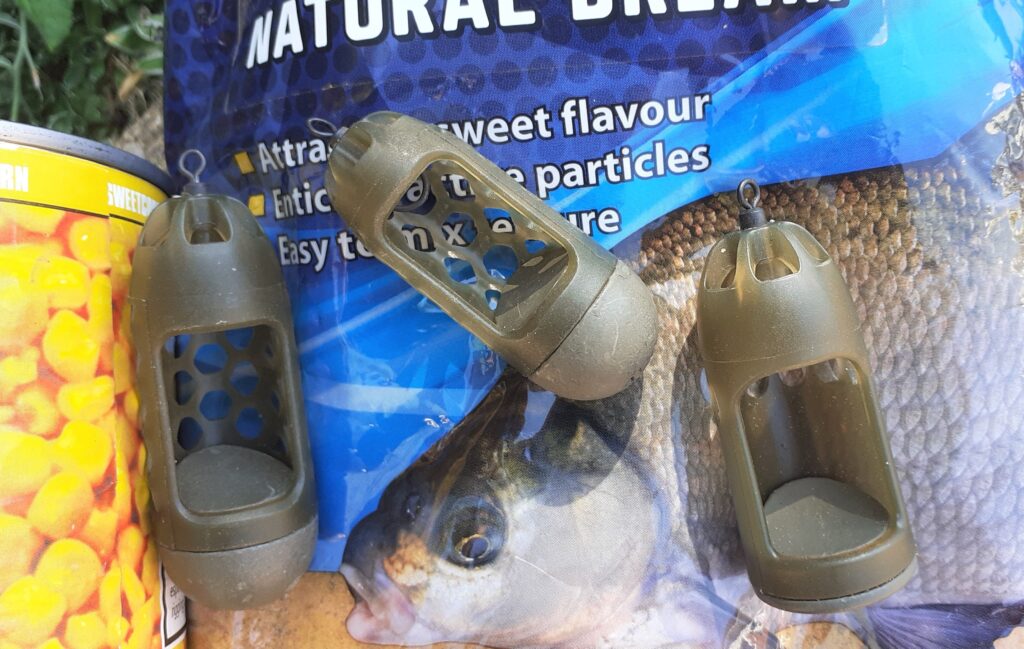

I don’t often need to switch to window feeders on many of the venues I fish, because other designs cope well enough, unless it gets incredibly windy. But I have still invested in a good selection of these brilliant devices because I like the concept behind them. The idea first took off over in Ireland on big loughs, where zebra mussels turned the water gin-clear. This required a big chuck to find the fish, which tend to back off a long way, particularly in competitions. Casting in excess of 60 metres becomes difficult, if not impossible with conventional side lead groundbait feeders, requiring rocket designs with forward-sited weights. But because those models rely on more groundbait to hold freebies securely in their bodies, the required result isn’t always achieved. Fish often back away from too much groundbait in clear water, while window feeders only need a tiny amount to hold in raw baits like chopped worm, casters, pellets and sweetcorn.
BLACK HOOKS
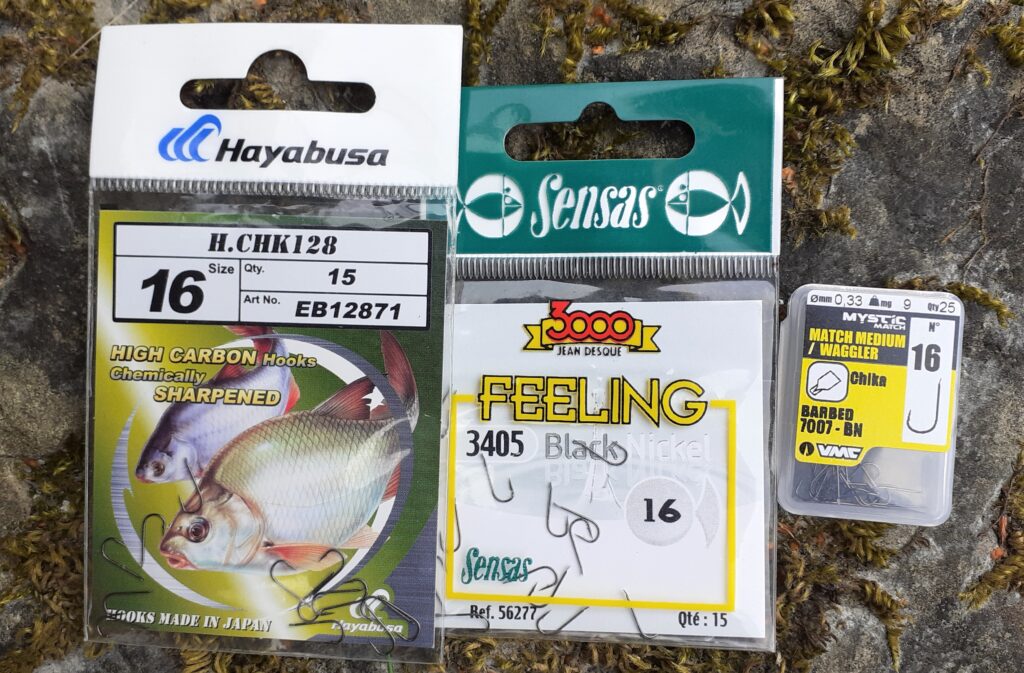

I switched to black nickel hooks when fishing clear water reservoirs, discovering they pulled a lot more bites from shy skimmers and roach. I’ve never really liked shiny or bright coloured products anyway. I was originally using classic round bend, medium wire hooks for silver fish with natural offerings like maggots, casters and worms. These baits didn’t sit right on more widely available pellet designs. The best model I found was Colmic’s bronze Nuclear B957, but these became almost impossible to get as tackle shops became preoccupied with carp puddle stuff. This forced me to switch to the Sensas Feeling 3405 pattern. There is a bronze version, but I much prefer the black nickel option, especially the unusual size 17 that’s perfect for bigger fish on relatively small baits. Most Colmic B957 followers have switched over to the Hayabusa EB12871 round bend black nickel pattern, while VMC Chika 7007s are also very similar.











